 |
 |
 |
| |
Early experiences with usage of injectable cabotegravir (CAB-LA) among Kenyan and Ugandan adults participating in the SEARCH Dynamic Choice HIV Prevention trial: a qualitative study....self & external stigma, convenience, feeling healthy
|
| |
| |
C.S. Camlin1, C. Akatukwasa2, J. Johnson-Peretz1, T. Arunga3, F. Atwine2, A. Onyango3, L. Owino3, G. Chamie4, L.B. Balzer5, M. Czarzowski6, E. Kakande2, H. Sunday2, N. Sutter4, M.R. Kamya2,7, J. Ayieko3, M.L. Petersen5, D.V. Havlir4, J. Kabami2
Institutions
1University of California, San Francisco, Obstetrics, Gynecology & Reproductive Sciences, San Francisco, United States, 2Infectious Diseases Research Collaboration, Kampala, Uganda, 3Kenya Medical Research Institute, Kisumu, Kenya, 4University of California, San Francisco, Medicine, San Francisco, United States, 5University of California, Berkeley, Biostatistics, Epidemiology, and Computational Precision Health, Berkeley, United States, 6ViiV Healthcare, Durham, United States, 7Makerere University College of Health Sciences, Medicine, Kampala, Uganda
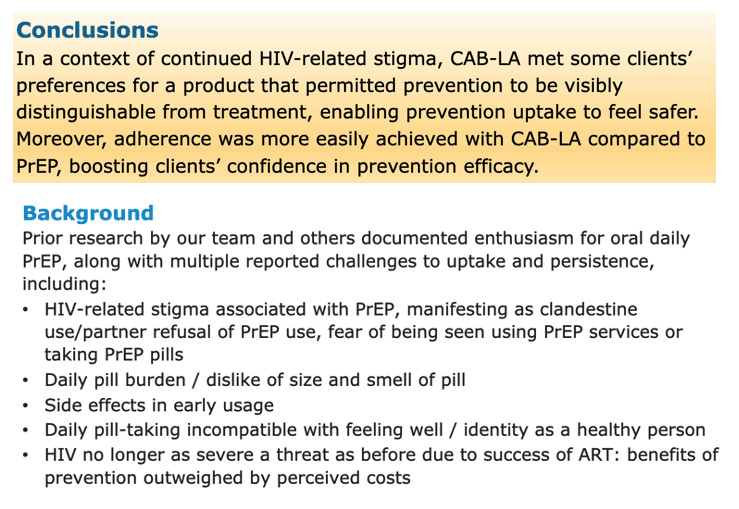
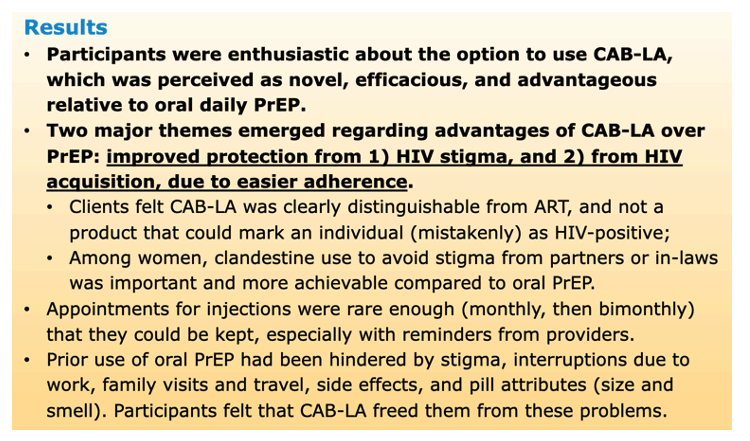
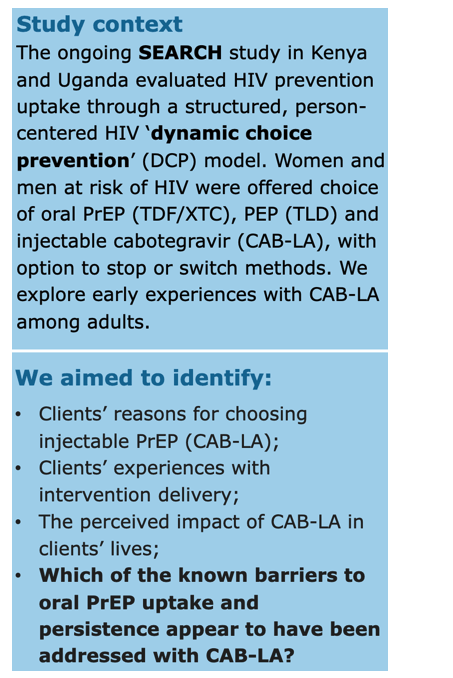
BACKGROUND: The ongoing SEARCH study in Kenya and Uganda evaluated HIV prevention uptake through a structured, person-centered HIV 'dynamic choice prevention model' (DCP). Men and women were offered choice of oral PrEP(TDF/XTC), PEP(TLD) and injectable cabotegravir(CA-LA), with option to stop or switch. This qualitative study explored early experiences with CAB-LA.
METHODS: In-depth interviews were conducted July-October 2023 with a purposively-selected sample of 48 participants who initiated CAB-LA. Interviews explored experiences with counseling, reasons for CAB-LA preference, and factors in decision-making, including perceived HIV risk, partner/family support, stigma/disclosure, prior experiences with PrEP, expectations of/experiences with CAB-LA, quality of care, and barriers/facilitators to persistence. We analyzed data using inductive coding and memoing.
RESULTS: Participants were enthusiastic about initiating CAB-LA, which was perceived as novel, efficacious, and advantageous relative to oral daily PrEP. Two major themes emerged regarding advantages of CAB-LA over oral PrEP: improved protection from HIV stigma and from HIV acquisition due to easier adherence. CAB-LA was seen as clearly distinguishable from ART, and not a product that could mark an individual (mistakenly) as HIV-positive ("...when they see the pill bottle, they conclude that I have HIV.") Among women, clandestine use to guard against stigma from partners or in-laws was important, and more achievable compared to PrEP. ("I was getting issues with my husband after seeing the pills.") Appointments for injections were rare enough that they could be kept, especially with reminders from providers. For some, prior use of oral PrEP was hindered by stigma, side effects, pill size/smell, and interruptions due to work and travel ("I had to travel and would forget to take my pills with me. The injection is much easier— when I take it, I become free.") Some participants reported pain and swelling at injection site, but hoped to continue usage if side effects could be managed.
CONCLUSIONS: In a context of continued HIV-related stigma, CAB-LA met some clients' preferences for a product that permitted prevention to be visibly distinguishable from treatment, enabling prevention uptake to feel safer. Adherence was more easily achieved with CAB-LA compared to PrEP, boosting clients' confidence in prevention efficacy.
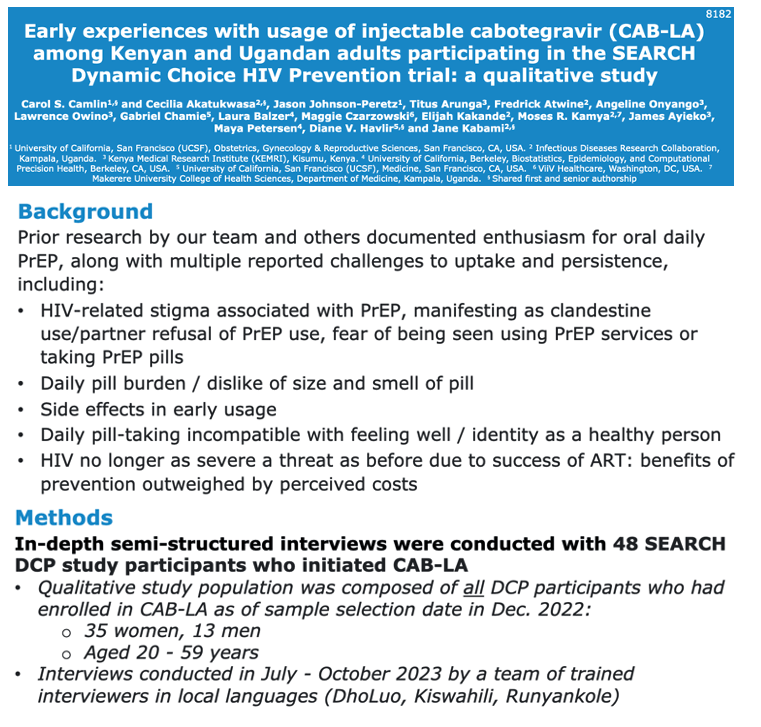
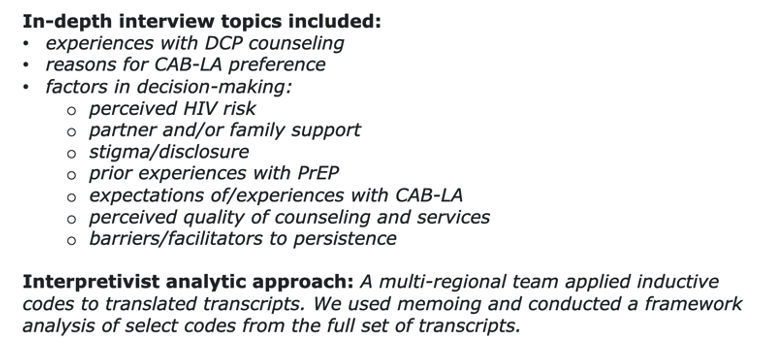
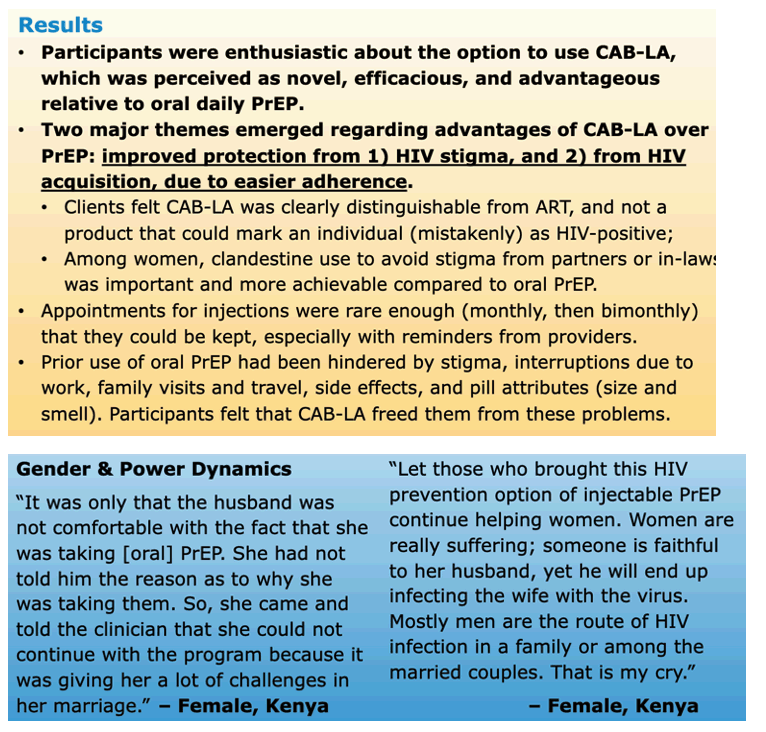
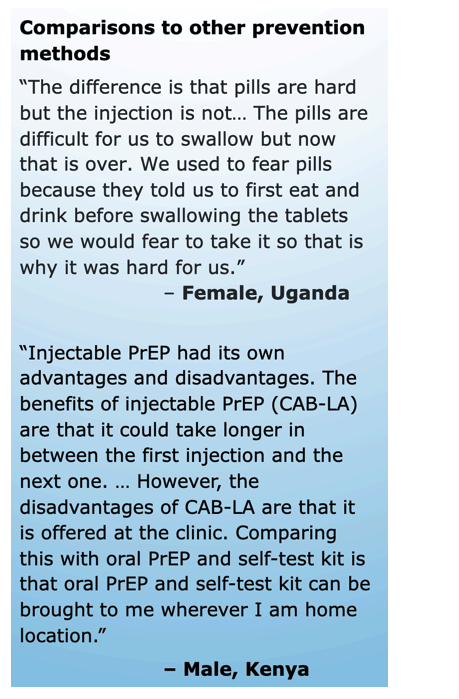
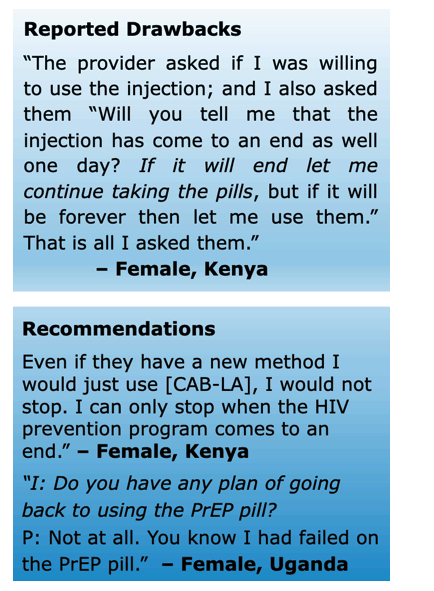
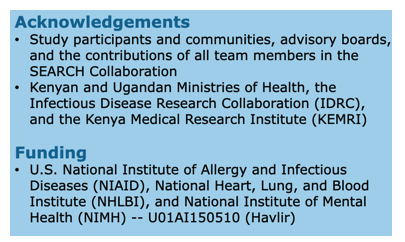
|
| |
|
 |
 |
|
|